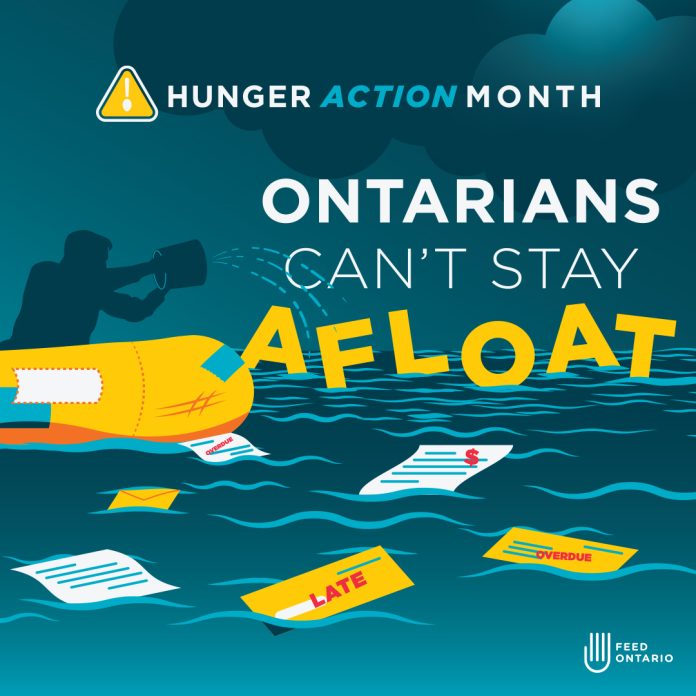Today Feed Ontario is releasing a new piece of record-breaking data: over 1 million people in Ontario visited a food bank in the last year. The organization also shared that food banks in the province were visited 7.6 million times over the course of the year, which is a 134% increase from 2019-2020. This represents a continued trend in the rise of food bank visits, marking an all time high and the eighth consecutive year of growth.
“When we released record-breaking data last year, we thought that was the high-water mark. But food bank use has only continued to climb as more Ontarians find themselves struggling to make ends meet,” said Carolyn Stewart, CEO of Feed Ontario. “When will our governments say enough is enough and take meaningful action against food insecurity and poverty?”
Feed Ontario’s data shows that the main drivers of food insecurity in Ontario are a result of the rapid spike in the cost of living, which many incomes have not kept up with, and a heightened economic vulnerability that is being felt throughout the province. The organization points to policy decisions like the erosion of social support programs, a failure to adequately invest in affordable housing, and the growth of precarious work as key causes of why Ontarians can’t keep their head above water.
“Food banks cannot keep up with the unprecedented need they’re seeing,” said Stewart. “Across the province, we are hearing reports of long lines, empty shelves, and a growing concern that some food banks may have to close their doors.”
Feed Ontario reports that with this added pressure, 69% of food banks in their network are concerned about not having enough food to adequately provide support to those in need, and 53% worry about having enough funding to adequately meet the demand in their areas. Food banks primarily rely on the generosity of their communities, and with an increasing number of people struggling, there are fewer able to help food banks stay afloat with donations and support.
“Food banks were only ever designed to be a temporary measure. They were never meant to patch holes left in our weak social safety nets. We need to act now,” Stewart said.
The Province is entering its final year of the 2020-2025 Poverty Reduction Strategy and, in light of this, Feed Ontario questions why the number of people living in poverty continues to skyrocket in all regions of Ontario. The organization calls on the provincial government to develop a more robust poverty reduction strategy moving forward, to ensure those who are struggling in Ontario can access a basic standard of living.
Further, Feed Ontario calls on all Ontarians to get involved. September is Hunger Action Month, a time to work to reduce poverty in your community. Feed Ontario recommends advocating for improvements to Ontario’s social assistance programs, the creation of quality employment, and investments that help make the cost of living more affordable.
Stewart also said she has hope for the possibility of a more food-secure Ontario: “If we work together, we can build a better future where everyone in Ontario has access to the food they need. Together, we can achieve an Ontario where everyone is food secure.”
Key Facts
- 1,001,150 unique individuals visited a food bank between April 1, 2023 and March 31, 2024, an increase of 25% over 2022-2023.
- Food banks were visited 7,689,580 times between April 1, 2023 and March 31, 2024, and increase of 31% over 2022-2023, and 134% over 2019-2020.
- 2023-2024 is the eighth consecutive year food bank use has risen in the province.








